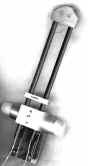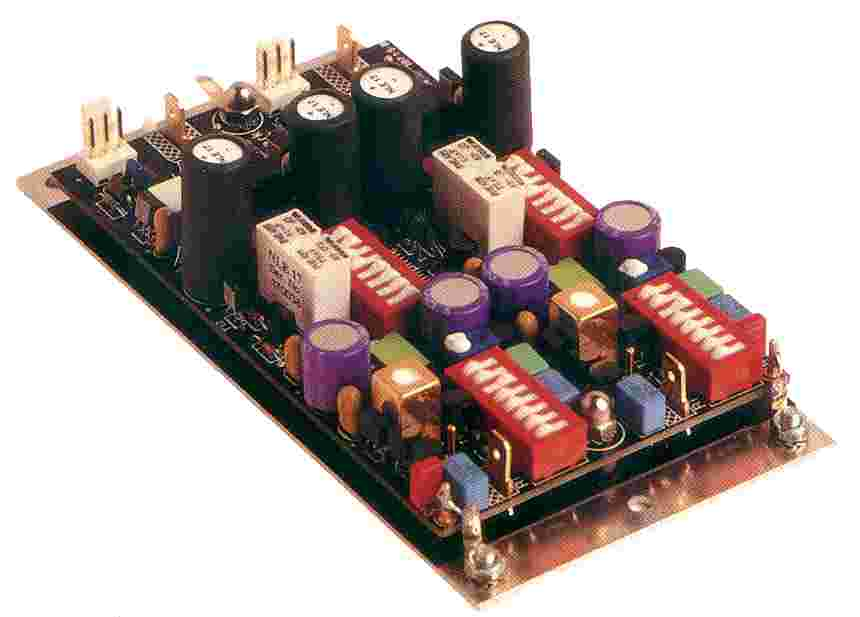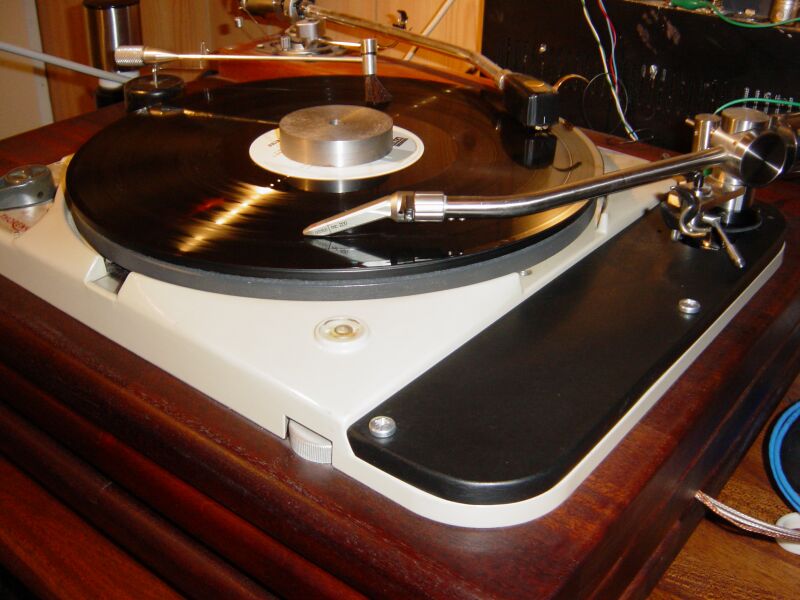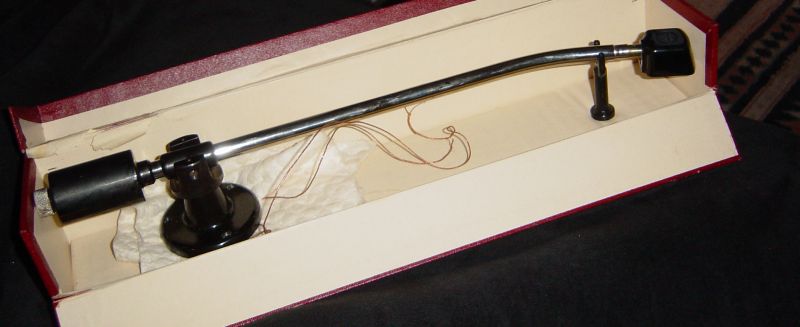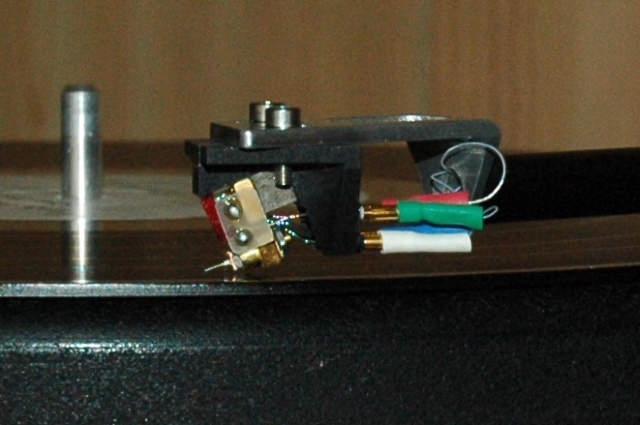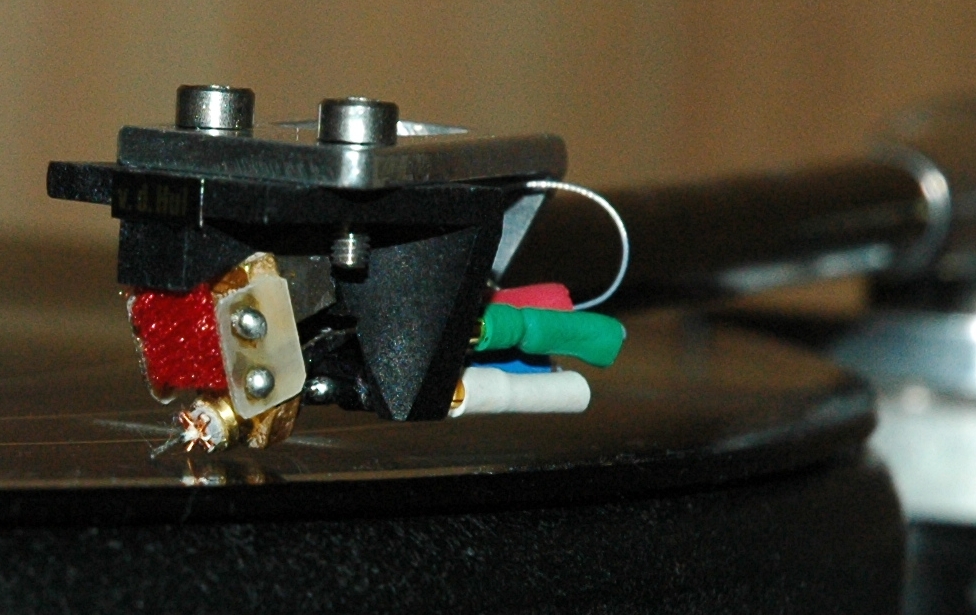|
|
||
| At new deck - Technics SP 10 mk II | ||
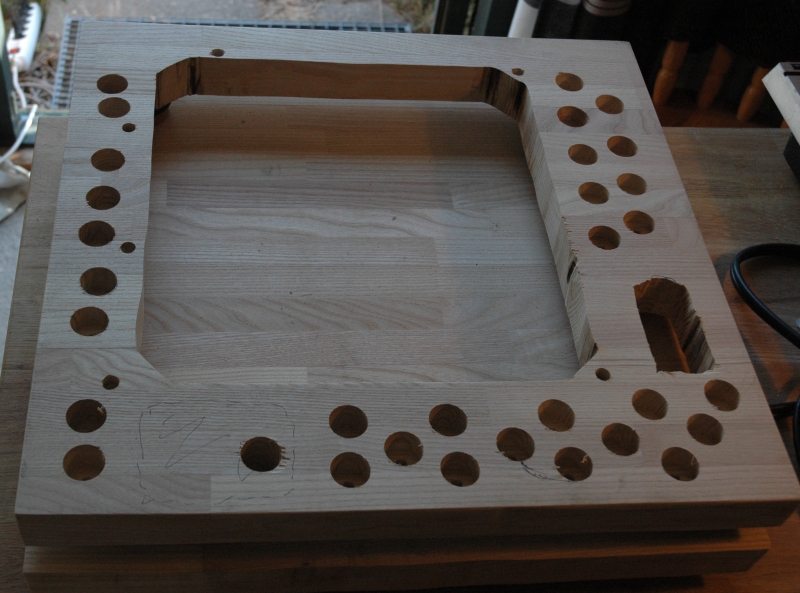 |
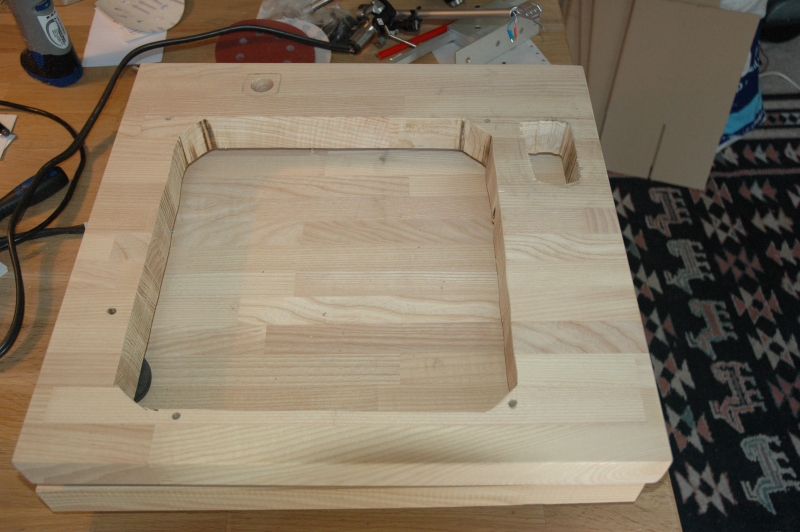 |
|
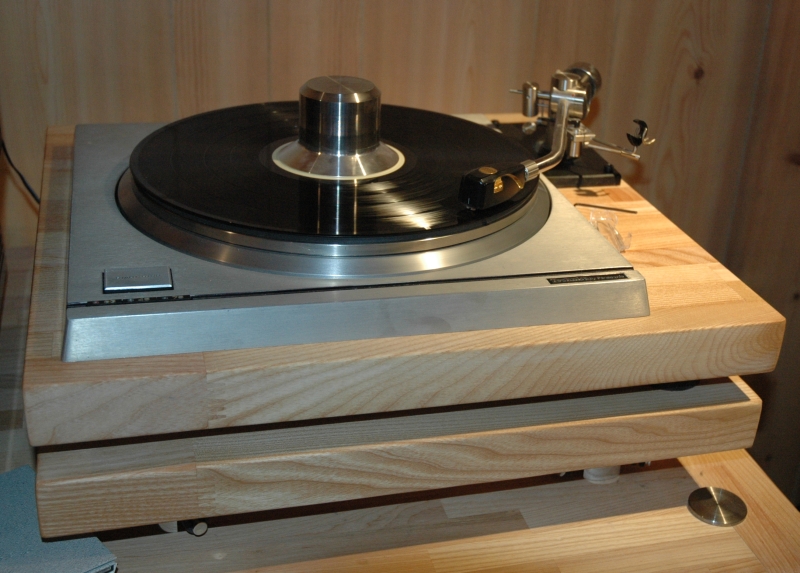 |
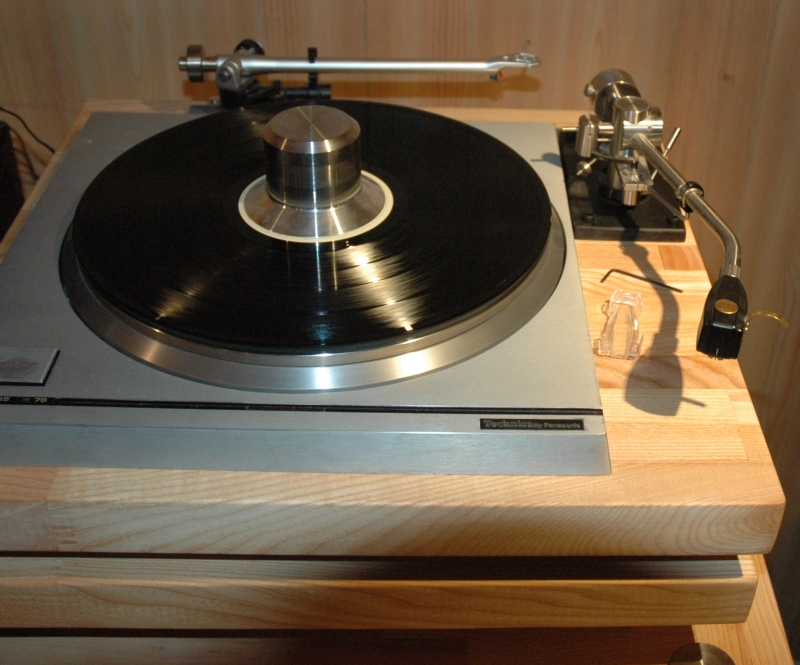 |
|
| 10 kg Flywheel for my "Monster |
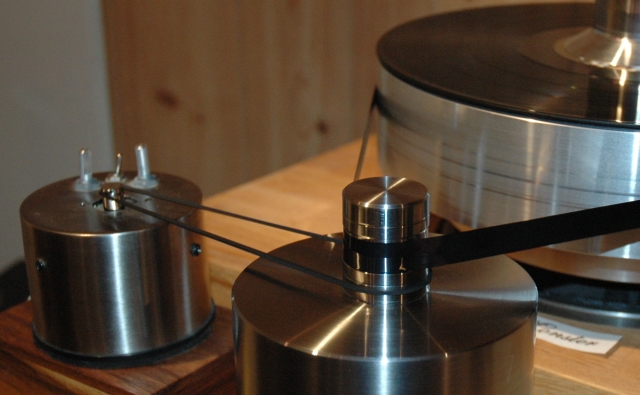 |
|
|
|
||
|
The platter on this deck were cast with among other things epoxy and lead-powder. Please note that there is no spindle. The record is centered by a top spindle integrated with a center tightening weight. |
||
The small airhose on the top of the slider supplies compressed air from a big pump placed in another room. The tube is made of very soft silicone rubber only 2 mms in outer diameter.
The lift is entirely mechanical. The large lever is mounted in a rubber bushing and pushes down the bar running behind the arm. The small compartment that now contains the counterweight was originally designed to hold two Lundahl MC-step up transformers that were to have done the job. The idea was to place them as close to the cartridge as possible. It worked fine, but since then the transformers have been dropped and I now use an active MC/RIAA amp.
Why Tangential arms should differ in vertical and
horizontal mass. |
||
|
You may know my MC/RIAA as the DACT CT100. Here in Denmark it is known as the NLE 17. NLE is Niels Larsen Electronics. I have known Niels for many years, and it is amazing what this smal company has achieved. At the moment I am building a new preamp employing the new NLE 19 lineamps/buffers and eventually the MC/RIAA will share the same box. The powersupply will be lead acid batteries. |
||
| Here the 2002 version of my TD124 with the FR64S and Ortofon MC200 cartridge. May be oldfashioned but it certainly plays music. |
|
|
| Remember the
old Ortofon arms? This is one of their forefathers made in Denmark
somewhere arund the 40'ies or 50'ies. A 12" with monowiring and no
antiskating. The mono cartridge is a moving iron (VMS-principle) but the
rubber is hard as cement It says "Walchris Supersound FWM" on the top and
"for microgroove" on the bottom. I have approx. 100 of these cartridges,
but none of them are working. The arm will be rewired and fitted with a
fixed house when I have the time.
|
||
|
The Van den Hul Condor ... not mine, but a friends. I helped to mount it.
A really fantastic cartridge
|
|
|

